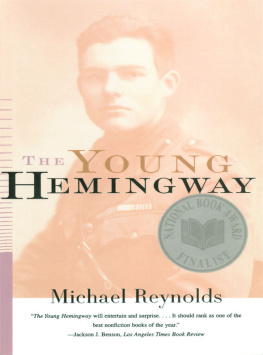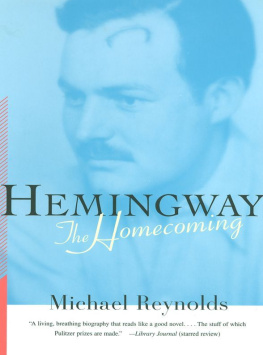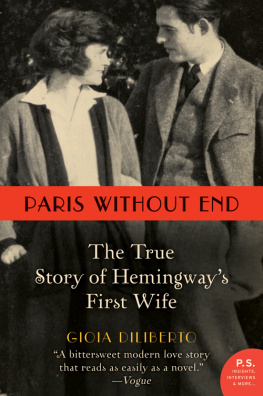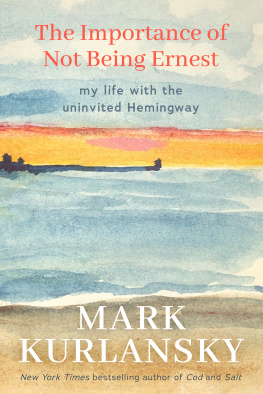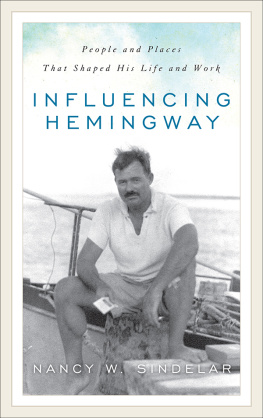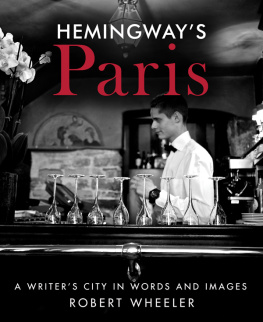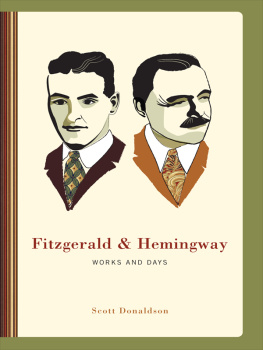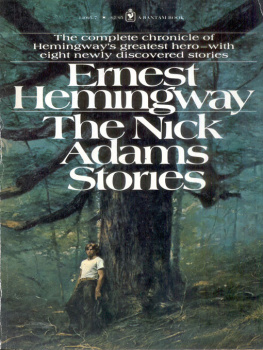Michael Reynolds - Hemingway: The Paris Years
Here you can read online Michael Reynolds - Hemingway: The Paris Years full text of the book (entire story) in english for free. Download pdf and epub, get meaning, cover and reviews about this ebook. year: 1999, publisher: W. W. Norton & Company, genre: Detective and thriller. Description of the work, (preface) as well as reviews are available. Best literature library LitArk.com created for fans of good reading and offers a wide selection of genres:
Romance novel
Science fiction
Adventure
Detective
Science
History
Home and family
Prose
Art
Politics
Computer
Non-fiction
Religion
Business
Children
Humor
Choose a favorite category and find really read worthwhile books. Enjoy immersion in the world of imagination, feel the emotions of the characters or learn something new for yourself, make an fascinating discovery.
- Book:Hemingway: The Paris Years
- Author:
- Publisher:W. W. Norton & Company
- Genre:
- Year:1999
- Rating:5 / 5
- Favourites:Add to favourites
- Your mark:
Hemingway: The Paris Years: summary, description and annotation
We offer to read an annotation, description, summary or preface (depends on what the author of the book "Hemingway: The Paris Years" wrote himself). If you haven't found the necessary information about the book — write in the comments, we will try to find it.
The 1920s in Paris are the pivotal years in Hemingways apprenticeship as a writer, whether sitting in cafs or at the feet of Gertrude Stein.
These are the heady times of the Nick Adams short stories, Fitzgeralds The Great Gatsby, and the writing of The Sun Also Rises. These are also the years of Hemingways first marriage to Hadley Richardson, the birth of his first son, and his discovery of the bullfights at Pamplona.
**
Amazon.com ReviewIn the second of his series of five biographies of Ernest Hemingway, Michael Reynolds turns to the years that formed the writers distinctive style and critical intelligence. He exhaustively chronicles the particular literary influences on Hemingway, oftentimes even recounting the reading lists that the writer received from particular individuals. Reading The Wasteland with Ezra Pound at ones elbow is no bad way to pick up a thing or two, he dryly observes at one point. He also pays close attention to Hemingways conversations with, and studying the literature of, Pound, James Joyce, and particularly Gertrude Stein, who later complained that for all of Hemingways talent, He looks like a modern and he smells of the museums. Reynoldss sympathy for his subject is so complete that at times his own stylistic voice becomes a sort of homage to Hemingways--colloquial, declarative, and wry. At times, however, he too liberally assumes the inner thoughts of his subjects. The substantial research and period analysis he commands turn such repeated phrases as he must have thought or it must have seemed to him into an unnecessary striving for authority. At his best, though, Reynolds not only uses his extensive source material with a critical eye but provides a wealth of information about the social, political, and literary backgrounds of a time and place that were in many ways the dawn of the 20th centurys intellectual tradition. --John Longenbaugh
From Publishers WeeklyDrawing on new sources, the author of The Young Hemingway here skillfully picks up where the earlier book left off, showing how a callous, uneducated, very young writer transformed his straightforward journalistic approach--the narrator conscious of his own responses to the event--into a cornerstone of his fiction. Based in Paris from 1921 to 1926, the brash braggart Hemingway, as portrayed by Reynolds, learned from what he read, experienced and observed, letting neither his wife nor his friendships--nor his constant sore throats--stand in the way of his career as a novelist. This is an entertaining, evocative, major biography of an exasperating man, and an enthralling re-creation of literary, artistic and sporting Paris during the Jazz Age. Photos not seen by PW.
Copyright 1989 Reed Business Information, Inc.
Michael Reynolds: author's other books
Who wrote Hemingway: The Paris Years? Find out the surname, the name of the author of the book and a list of all author's works by series.


